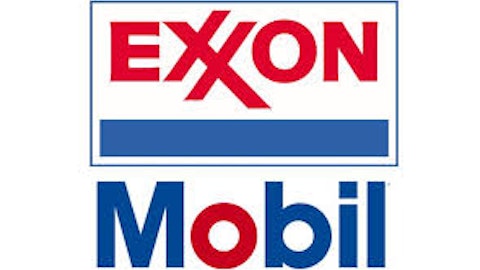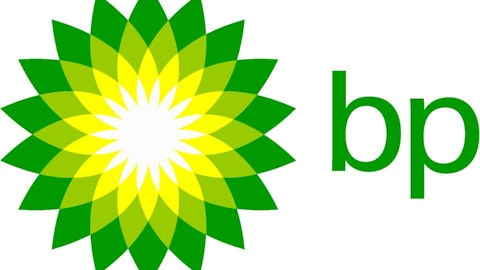The energy sector has some of the best-performing and most stable stocks. The participants in this sector have been under some pressure of late due to the slowdown in the global economy and financial crisis. However, the time looks just about right to buy energy stocks as the global economy starts its recovery. There are many companies in the sector with attractive growth opportunities and healthy income potential; however, I like Exxon Mobil Corporation (NYSE:XOM) the best.

Let me explain why I’m a fan of this oil-and-gas giant, and why you should consider it for your own portfolio.
Future growth and impressive past performance
Exxon Mobil Corporation (NYSE:XOM) was able to come out of the financial crisis in relatively better shape than most of its peers. Most of the companies in the energy sector took a lot longer than ExxonMobil to get back on the growth path. ExxonMobil recorded substantial growth in revenue (over 23%) in the first year after the financial crisis of 2008. Since then, the company has been able to grow revenue at an average annual rate of 13.8%, which is extremely impressive for an energy company.
While Exxon Mobil Corporation (NYSE:XOM)’s past performance has been impressive, it’s important to identify the future growth prospects when making an investment decision. Energy demand is expected to rise in the coming years due to an increase in economic activity, mainly in Asian countries.
As a result of the shale boom, the U.S. will strengthen its position as an exporter of oil and gas, and Asian economies will be the biggest customers of North American producers. ExxonMobil, being the world’s largest publicly-traded energy company, will benefit hugely from this rising demand.
According to the energy outlook, the world population will increase by around 25% over the next three decades. As a result of this anticipated population boom, demand for energy will increase. Since the majority of the increase in population will come from Africa and Asia, the demand for energy will be the highest in these two regions.
The global energy landscape will evolve significantly as regional demand and supply patterns shift in the coming decades, creating new opportunities for international trade and economic growth. Natural gas prices will soon stabilize due to the export facilities being built in the country.
Exports of Liquefied Natural Gas (LNG) will bring inventory levels down, which will stabilize natural gas prices. Oil prices are less volatile and are expected to remain around the current levels during the current year.
Juicy dividend and solid cash flows
Exxon Mobil Corporation (NYSE:XOM) has a long history of dividends, and the company has increased its quarterly dividends for thirty years in a row. It usually increases its quarterly dividends at the end of the second quarter of the year, so, we can reasonably expect another dividend hike in the next quarter – another reason to invest in ExxonMobil in the near future.
At the moment, the company pays an annual dividend of $2.28 per share, yielding 2.5%. The yield is not mouth watering, but the consistency of dividends and the history of rising distributions at regular intervals are important factors.
Moving on to the cash flows – ExxonMobil has hugely impressive cash flow generation ability. At the end of 2012, the company’s cash flow from operations was $56.1 billion, representing a slight increase from the year ago levels of $55.3 billion.
In addition, Exxon Mobil Corporation (NYSE:XOM) paid cash dividends of $10.4 billion and generated $21.9 billion in free cash flow last year. Free cash flow has decreased, but the free-cash-flow-to- dividend coverage is still very strong. The payout ratio based on free cash flow still hovers below 50%, which gives the company enough room to grow dividends.
Competitive landscape
Some of the other major players in the sector are Royal Dutch Shell plc (ADR) (NYSE:RDSA) and BP plc (ADR) (NYSE:BP). Most of these companies are now changing their strategies and moving toward higher-growth segments of the market.
In a growth plan representing the 2012 through 2015 period, Shell indicated it expects to generate between $175 billion and $200 billion in total cash flow from operations. Further, the company is trying to expand the pipeline of its products.
Like many of its peers, Royal Dutch Shell plc (ADR) (NYSE:RDSA) is trying to exit non-core low-growth assets and invest in high-growth assets. Shell is one of the first companies to receive a license to export LNG from North America.
British Petroleum is also shedding its non-core and low-growth assets and is investing in high-growth locations. The company recently sold its stake in the Russian company TNK.BP, and invested some of the cash in Rosneft, Russia’s state-owned oil company. In addition, the company decided to return some of the cash ($10 billion) to its shareholders.
Conclusion
Energy demand will increase substantially in the near-future, and ExxonMobil will be one of the primary beneficiaries of rising demand. Future growth prospects make Exxon Mobil Corporation (NYSE:XOM) a buy at the moment. ExxonMobil is one of the best managers of capital in the industry. It has spent over $100 billion in capital expenditures over the past four years to build an impressive portfolio of assets. As a result, of efficient management and capital allocation policy, the company has been able to set itself apart from its peers.
Ishtiaq Ahmed has no position in any stocks mentioned. The Motley Fool has no position in any of the stocks mentioned.


